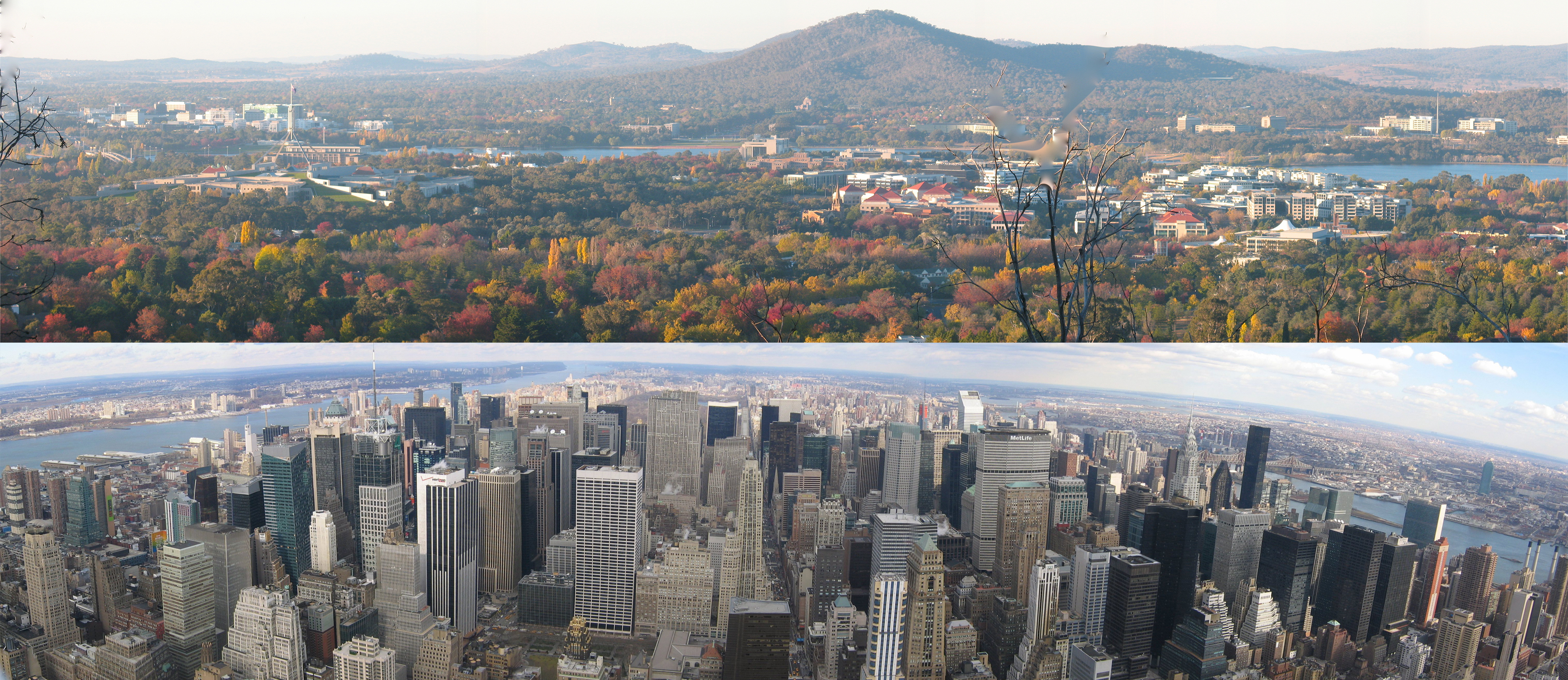Australia’s Biodiversity series – Part 8: Cities and towns
Cities are one of the great inventions of civilisation. They are centres of knowledge, invention and cultural change. But how good are they at supporting the local plants and animals?
Cities tend to have been built in areas of high biodiversity, with rich soil and permanent water supplies, and so there may be more species living in and around your city or town than you think. Simply punching your postcode into the Atlas of Living Australia will give you a list of everything that’s been recorded there.
Of course, the fact that there’s now a city on that land will have impacted species’ ability to persist there. The way we design and lay our cities out has an influence on how extensive that impact is, and will continue to be important as cities and populations grow.
Canberra and New York City are at opposite ends of the urban density spectrum. But which is better for biodiversity? Image: Mark Lonsdale
Cities occupy just 2% of Earth’s surface but account for 75% of the resources consumed by humans. That sort of resource use represents one of the biggest challenges to the world’s biodiversity. But being centres of cultural change, cities also present many opportunities to engage people in supporting biodiversity conservation efforts.
In the eighth video of our Australia’s Biodiversity series, Dr Mark Lonsdale talks about the relationship between cities and biodiversity and some of the big ways cities can play a role in supporting our biodiversity in coming decades:
To find out more about the relationship between our cities and towns and biodiversity, you might like to read the corresponding chapter of CSIRO’s Biodiversity Book.
Last week’s video looked at agricultural landscapes and how they can be better managed to support biodiversity. You can review it and the other videos in the series on our YouTube channel.



17th September 2014 at 11:24 pm
Thanks for pointing out the book and the atlas. Cities could do a lot more if they integrated spaces that could serve as habitats more into their planning. Often playgrounds have fences where they could have hedges. If they have hedges, they often are of totally monocultured “variety”, often foreign species, often even poisonous … The same with parks. And a lot of concrete cobble stones could be replaced with some creepers and still provide safe footpaths. Not to talk about green roofs and such …